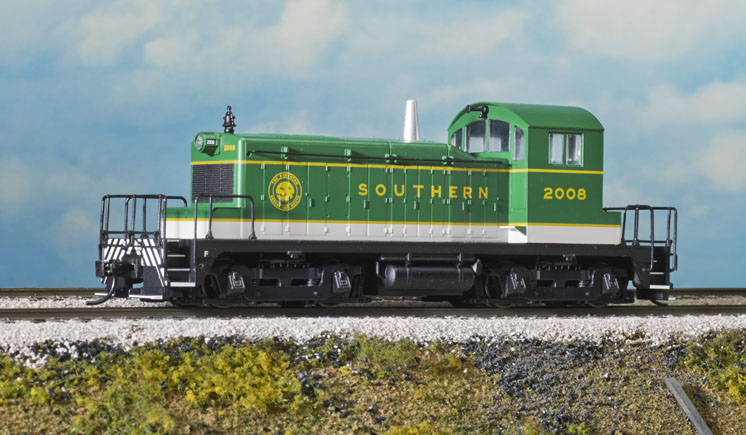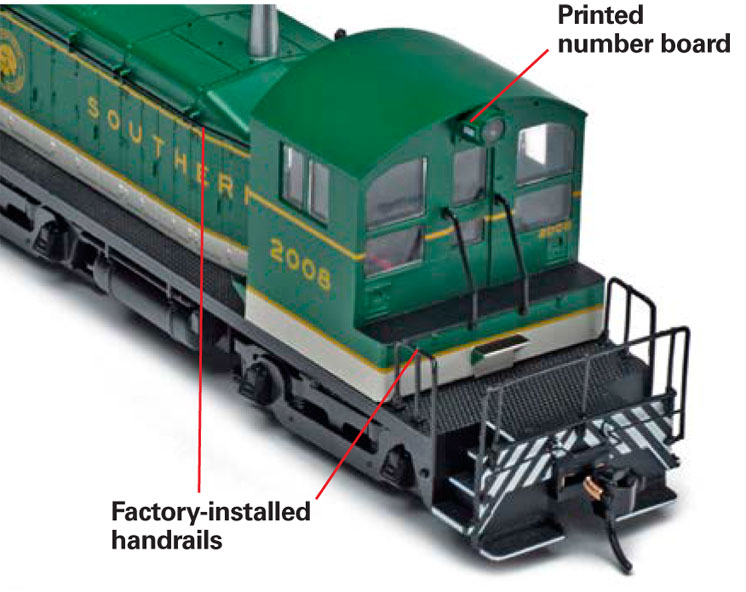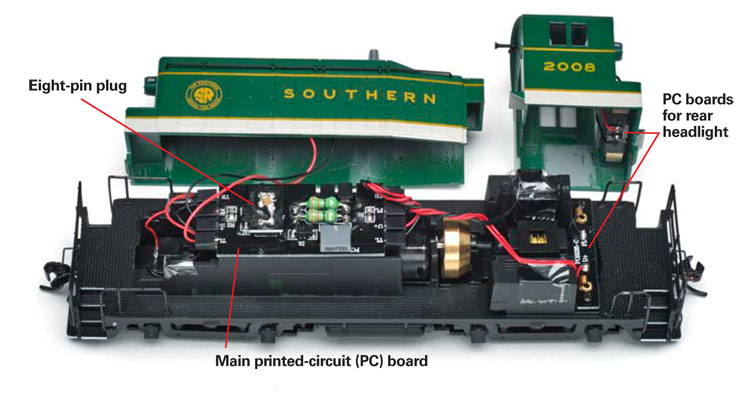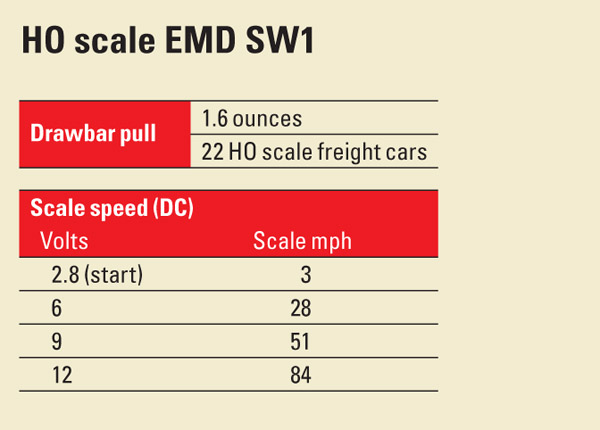The 600 hp SW1 was built between January 1939 and November 1953, with a brief War Production Board-ordered stoppage between 1942 and 1945 (though some units were built in 1942 and 1943). Over the course of the production run, 661 SW1 switchers were built.
With a long production run, it’s not surprising there were variations on the SW1. Early models included arched windows that followed the cab’s roofline, a short exhaust stack, single-beam headlights, and a two-stage taper between the hood and cab.
Late-production models had rectangular windows; twin sealed-beam headlights; a taller, conical exhaust stack; and a straight taper between the hood and cab.
The Walthers model is based on a mid-production prototype, as it features arched cab windows; single-beam headlights; a tall, conical exhaust stack; and a two-stage taper between the hood and cab. The model matches prototype drawings published in the November 1991 issue of Model Railroader.
It’s been 75 years since the first SW1 was built, but examples of this iconic end-cab switcher can still be found switching passenger equipment for Amtrak in Washington, D.C., moving covered hoppers at grain elevators throughout the Upper Midwest, and pulling tourist trains around the country.
The paint on our sample is smooth and evenly applied. The gold stripes, Southern Ry. herald, and lettering are all crisp and opaque. I especially appreciated that the number boards are factory printed.
A carryover from the 1993 model is the molded drill-starter points on the side and top of the hood and back of the cab. This makes it easier for modelers to add wire grab irons, which aren’t included.
The shell is held to the chassis with two tabs (one below the step on the battery box, the other below the sandbox on the hood). Use caution when removing the hood, as the light-emitting diode and its wires are tethered to the shell.
While the front headlight is connected directly to the main printed-circuit (PC) board, the rear headlight is cleverly illuminated via three PC boards. Red and black wires from the main PC board are attached to a narrow PC board with two brass contacts that’s screwed to the chassis. The contacts touch pads on a second, narrow PC board attached to the underside of the battery box. The LED and wires are attached to the latter board.
The main PC board is attached with two Phillips-head screws to the chassis. The eight-pin plug for a DCC decoder is located near the front of the board. Space between the shell and chassis is at a premium, so adding a speaker would be tricky. Though not ideal, the best spot for a speaker would be in the cab.
Underneath the main PC board is the motor. The 1993 model used a universal shaft and rubber tube to transmit power from the motor to the trucks (Walthers offered a free universal kit to replace the rubber tube for tight-radius operation). The new version uses plastic drive shafts and universal joints for that purpose. The flywheels are located between the motor and universal joint.
As on the original SW1 model, the truck pivots are on the bottom of the trucks. This makes it possible for all of the wheels to be powered while providing room for the motor and flywheels.
The SW1 weighs 9.3 ounces. Much of this heft comes from the die-cast metal chassis. With a drawbar pull of 1.6 ounces, the switcher is capable of pulling 22 cars on straight and level track.
Kudos to Walthers for bringing back the Electro-Motive Division SW1. This pint-sized switcher would look good switching cars in a yard or industry or pulling trains on a branch line.
Manufacturer
Wm. K. Walthers Inc.
P.O. Box 3039
Milwaukee, WI 53201
www.walthers.com
Era: 1939 to present
Road names: Southern Ry., Amtrak (one road number), Boston & Maine, Great Northern, Milwaukee Road, Pennsylvania RR, Rock Island, and Southern Pacific
Features
- 40 scale inch metal wheelsets, correctly gauged
- All-wheel drive and electrical pickup
- Die-cast metal chassis
- Directional lighting
- Eight-pin plug for Digital Command Control decoder
- Five-pole skew-wound motor with two brass flywheels
- Proto-Max metal knuckle couplers (front coupler at correct height, rear coupler has low trip pin)


















For those interested in installing a non sound decoder, I was able to use the Digitrax DN135PS, and tuck the decoder toward the front truck without issue. Space is really limited. As Cody mentioned, perhaps a speaker can be located in the cab, but be carful, because the wire may come in contact with the flywheel. Great little engine.
I am not sure if there is a time delay on this article, but I went to the Walthers website to see the liveries, and found that the Boston & Maine, Milwaukee Road and Southern Pacific models are all marked as discontinued and not in stock.